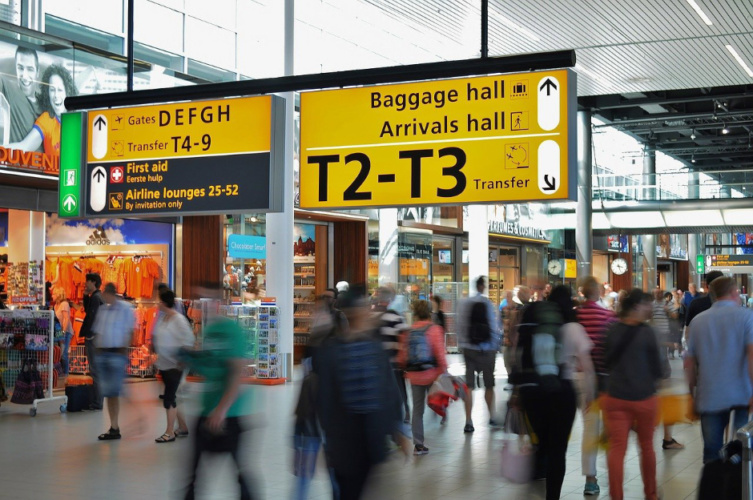The Indoor Lab has partnered with Cepton to deliver a new crowd analytics solution, recently deployed at Orlando International Airport.

The Indoor Lab, which provides solutions for monitoring real-time foot traffic using lidar sensors, uses Cepton‘s Helius Smart Lidar System in the new solution, named Safe Place.
Helius enables The Indoor Lab to provide anonymised 3D tracking of people in order to improve the usability, safety and cleanliness of large spaces. The Indoor Lab’s visual analytics platform, leveraging the Helius Smart Lidar System, powers the Synect Evenflow Crowd Radar media lights in Terminal Two of Orlando International Airport (MCO).
The project is one of several early projects initiated by The Indoor Lab and Cepton as part of a strategic partnership announced this week. The partnership aims to pave the way for ‘long-awaited innovations’ that will save customers time and money, enable more efficient design of public and private commercial spaces, and add a ‘much-needed’ capability to improve public safety during the COVID-19 pandemic.
“We have a 15-year history of crowd tracking across retail, events, airports and stadiums,” said Patrick Blattner, co-founder and CPO of The Indoor Lab. “So, when COVID-19 started spreading exponentially and negatively affected many public and private spaces, we consulted with leaders involved in drafting proposals for the International Franchise Association, including the use of lidar technology to help put the country back on a path towards normalcy.”
MORE ON ENGINEERING ‘THE NEW NORMAL’ DURING COVID-19
According to The Indoor Lab, the crowd analytics solution led to a drastic improvement in people’s adherence to social distancing during the busy holiday season in Orlando.
The effectiveness of the solution relies on the high-point density and detection range of Cepton’s MMT-based Vista-series lidars and Helius system that provides object dimensions, locations and velocities. The ‘mirrorless, frictionless and rotation-free’ MMT architecture is said to enable lidars that are reliable and easy to integrate for indoor and outdoor applications.
Helius also allows aggregation of data from multiple Cepton lidar sensors to form an extendable network for tracking which, The Indoor Lab explained, allows anonymised tracking of the same person across large overlapping areas – a factor The Indoor Lab described as ‘game changing’.
To cover nearly 100 per cent of the terminal area of roughly 50,000 square feet would otherwise have required significantly more video cameras, each consuming far more data and storage bandwith compared to the lidars, The Indoor Lab said.
Other key advantages described include accurate performance regardless of lighting conditions, and the protection of people’s privacy and reduced analytical bias due to the fact that the lidar sensors do not capture biometric data such as facial features and skin/hair colour.
Blattner explained that the solution is therefore compliant with privacy laws, while also being able to integrate with point, tilt, zoom (PTZ) cameras to detect potential public safety risks such as an unattended bag.
Extending beyond airports, the technology is being used to monitor real-time traffic globally across hotels, stadiums and large commercial venues to provide information on crowd density and optimise customers’ experiences.
The post New crowd analytics solution deployed at Orlando airport appeared first on The Engineer.


